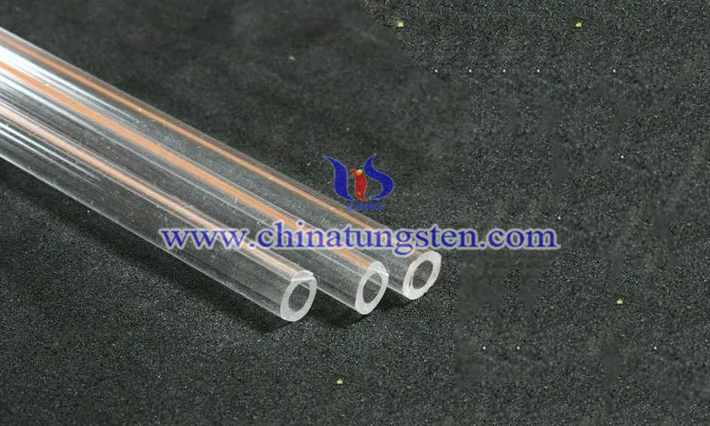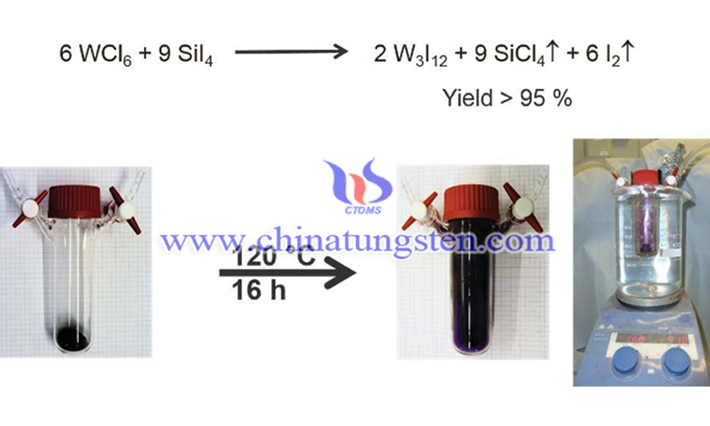What Are the Preparation Methods for Tungsten Diiodide?
- Details
- Category: Tungsten Information
- Published on Monday, 26 June 2023 16:31
There are three direct preparation methods for tungsten diiodide, which are obtained by high-temperature chemotaxis, halide exchange reaction, and reaction of tungsten hexacarbonyl with elemental iodine. Meanwhile, tungsten diiodide can also be obtained by indirect method.
High-Temperature Synthesis Reaction Method
Tungsten diiodide is prepared by reacting elemental tungsten and elemental iodine at temperatures between 600 and 800°C. For example, a temperature of 950°C is chosen as the temperature of the reaction. For example, a temperature of 950°C is selected as the reaction condition so that tungsten powder reacts with iodine to produce tungsten diiodide. This method exhibits the disadvantages of low yield, long reaction duration, and high iodine pressure in sealed silica tubes, and is not an optimal method for producing tungsten diiodide in large quantities.
Halide exchange reaction method
The halide exchange reaction method involves a halide substitution reaction between tungsten hexachloride (WCl6) and liquid hydrogen iodide (HI) in a sealed vessel at -51°C, followed by treatment at 110°C, with the final product being tetraiodotungsten (WI4) in composition. In the same line of thought, if the temperature conditions are changed, tungsten diiodide can be produced by reacting WCl6 with gaseous HI at 400°C in a reaction tube. The disadvantage is that the reaction is only possible on a small scale and halide exchange may be incomplete.
Reaction method of tungsten hexacarbonyl with elemental iodine
In response to the shortcomings of the halide exchange reaction method, some scientists have developed the reaction of tungsten hexacarbonyl with elemental iodine to produce tungsten diiodide, which is a black powder that is produced by the reaction of a tight mixture of tungsten hexacarbonyl and elemental iodine, with the release of carbon monoxide gas at 140°C in a Pyrex glass tube. The powder can be extracted chemically, but this method produces an intrinsically inhomogeneous reaction product, and there is a risk of explosion of the molten Pyrex glass tube due to the gaseous pressure of carbon monoxide.

Indirect preparation method
It can be seen from the above preparation methods that there are condition limitations in trying to obtain tungsten diiodide directly, and the yield of tungsten diiodide will be improved if the idea is changed to prepare the more readily available compounds of iodine and tungsten first, and then further processed. In 2016, a related study reported a novel halogen substitution reaction. The researchers reacted a powder mixture of WCl6 and silicon tetraiodide (SiI4) in a Schlenk tube at a temperature condition of 120°C for 16 hours. After removing the residual iodine and silicon chloride, a black crystalline powder W3I12 (W3I8·2I2) was obtained. At the same time, WCl6 and SiI4 were heated at 150°C to obtain the black crystalline powder W4I13. These two compounds have been successfully used as starting materials for the preparation of other binary tungsten iodides.

- Tungsten Oxide Manufacturer & Supplier, Chinatungsten Online: www.tungsten-oxide.com
- Tungsten News & Prices of China Tungsten Industry Association: www.ctia.com.cn
- Molybdenum News & Price: news.molybdenum.com.cn
- Tel.: 86 592 5129696; Fax: 86 592 5129797; Email: sales@chinatungsten.com



 sales@chinatungsten.com
sales@chinatungsten.com